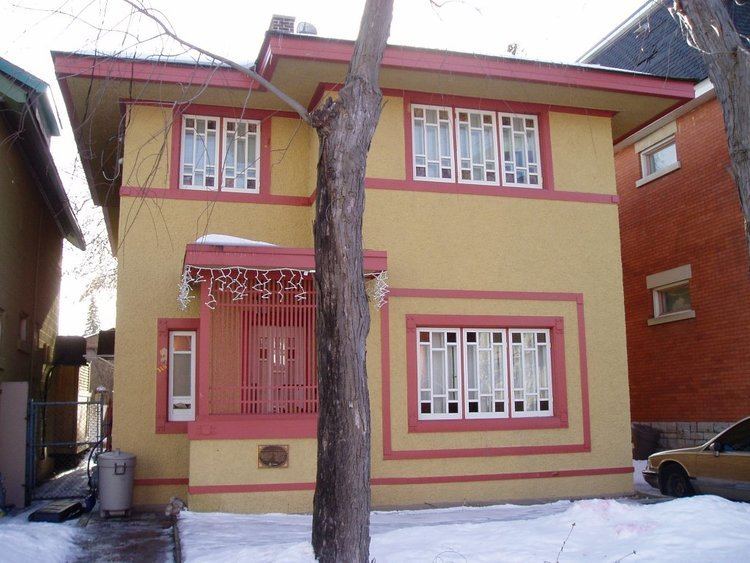Francis Conroy Sullivan (July 2, 1882 – April 4, 1929) was a Canadian architect.
The only Canadian pupil of Frank Lloyd Wright,Sullivan worked in the Oak Park studio in 1907 but returned to Ottawa in 1908. Sullivan brought the modernist Prairie School style to Canada, building a number of prominent structures, often in the Prairie Style.
Sullivan was born in Kingston, Ontario. He was an architect for the Canadian Department of Public Works from 1908 to 1911, after which he had an independent practice in Ottawa until 1916. In this capacity he frequently designed schools for the Ottawa Catholic School Board. In 1920 he moved to Chicago and became the chief architect for the Chicago Public School Board.
Examples of Sullivan's work include:
The O'Connor Street Bridge in Ottawa, Ontario, Canada - 1907108 Acacia Avenue, Ottawa - 1908The Banff National Park Pavilion, (with Frank Lloyd Wright), Banff National Park, Alberta, Canada - 1911.No 7 Fire Station Arthur Street, Ottawa 1912Apartment House 204 Laurier Ave East ottawa. 1913Ecole du Sacre Coeur (now School House Lofts), 19 Melrose Ave, Ottawa – 1912Pembroke Public Library, 237 Victoria Street, Pembroke, Ontario, Canada – 1913Horticulture Building, Lansdowne Park, Ottawa – 1914Francis C. Sullivan House, 346 Somerset Street East, Ottawa - 1914Patrick J. Powers House, 178 James Street, Ottawa – 1915Edward P. Connors House, 166 Huron Ave North, Ottawa – 1915Ransome W.Dunning Residence 99 Acacia Ave. OttawaStonewall Post Office (Now a prominent Antique Shop & Bookstore), 357 Main Street, Stonewall, Manitoba, Canada – 1915 [1]Church of Ste. Claire de Goulbourne (now St. Clare’s Catholic Church), near Dwyer Hill, Ontario – 1915The St. Martin of Tours Church, Glen Robinson Ont. (Destroyed by fire in the 1950s).6 Allan Place, OttawaShawville Post Office, 100 Victoria Avenue, Shawville, Quebec, Canada – 1917Orthoipedic Hospital, North Toronto Military Hospital 1917Service Storehouse North Toronto Military Hospital 1917Military convalscent Home Coberg, Ontario 1917Sir Oliver Mowatt Sanatorium, Kingston Ontario 1917Infirmary Building, Provincial Sanatorium Kentville N.S. 1917Military Convelescent Home, Guelph, Ont. 1917The Lindenlea Housing Project, Ottawa 1919-21Bartholomew Armstrong Residence 8 McLeod St. Ottawa 1924Steinmetz High School, N. Mobile St. Chicago 1925Calumet High School. E. May Street, Chicago. 1925Edward J. Kelly Estate, Vilas County, near Eagle River, Wisconsin, USA. – 1925Although influenced by Wright, Sullivan's work diverged from Wright's in certain important ways. For example, whereas horizontals predominate in Wright's creations, Sullivan used strong verticals to create tension in his designs.
Sullivan moved to the Wright home at Taliesin West in Scottsdale, Arizona, at Wright's invitation, and died there on April 4, 1929.

